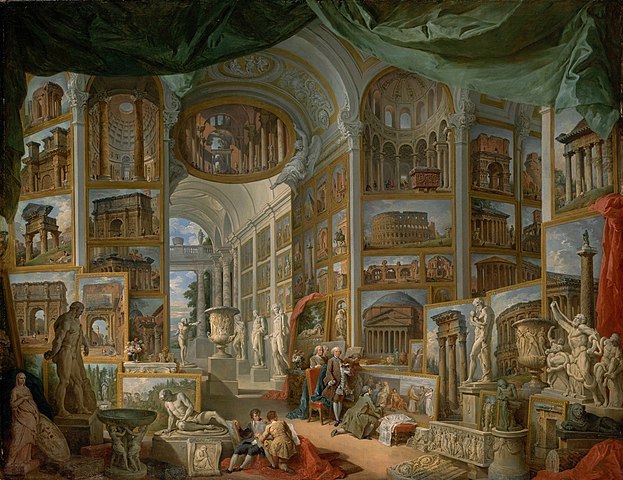‘The alarming future of the Art, Antiquity and Archaeology Market at the hands of a ‘grotesque’ European directive,’ held February 29, Paris France.

Nature morte au flambeau d’argent, Meiffren Conte (1630–1705), 1985: auctioned and sold to French State, Palace of Versailles Collection, public domain.
A dramatically named event at the Pagoda of Paris was hosted by France’s antique dealers association, the Syndicat National des Antiquaires (SNA). Leading art dealers, cultural lawyers and media specialists spoke to a crowd that included many art dealers, auction house representatives, and international media. The SNA roundtable was held to highlight its campaign to alert museums, collectors, and the public about the threat to the legitimate art market in France posed by import restrictions following implementation of an EU law.
The ‘grotesque’ European directive in the event’s theme is EU Regulation 2019/880, which will go into effect on June 28, 2025. The law will impact the ability to transfer virtually all forms of cultural property held outside the EU into any EU country, but it most severely limits the import of ancient art, manuscripts, ethnographic art and valuable antiques.

Affiche de Maurice Réalier-Dumas (1860-1928) pour la 15e exposition de la Société internationale de peinture et de sculpture à la galerie Georges Petit à Paris en 1897, public domain.
Noted art lawyers, Maîtres Pierre Valentin and Yves-Bernard Debie were present, Valentin to provide the basics on the operation of the new law and enumerate the challenges and unknowns that French and other EU importers will face in simply continuing their ordinary trade. Yves-Bernard Debie’s presentation emphasized the threat to fundamental principles of law in placing the burden of proof on the citizen rather than the government to show the legitimate status of virtually all antique art. In so doing, the law effectively risks branding collectors and dealers as criminals or seizing objects reimported into the EU from abroad if the owner cannot provide satisfactory ‘proof’ that an object was legally exported from a source country many decades before. Museums will be hard put to acquire objects from outside the EU, whether by purchase or gift. The most likely result will be to create a closed EU market, which will make future growth as international marketplaces in France and other EU countries impossible.
Artnet’s Devorah Lauter, reporting on the Paris event, quoted SNA board member Anthony J.P. Meyer’s description of the legislation’s impact on collections in the EU with non-existent documentation – a situation that is typical of collections of antiques and antiquities:
“Most of these objects never had a trace… They’ve been around … [in homes] for years. No one ever requested any form of information, any paper trail, because there was no obligation to do so… It was moral and legal at the time – today, the mentality has changed, and we are changing with it.”
“We’re trying to save all of our jobs, our market, [and] save the possibility for people to appreciate art and to own art. The antique market is one of the great purveyors of cultural information and knowledge … If you kill the market, you’re going to kill all of that information and appreciation.”

Julien-Léopold Boilly ou Jules Boilly, Paris 1796 – 1874, The Auction, public domain.
As Mayer noted, a key issue is that most antiques and antiquities have been in circulation for a long time and no documentation is available for them, regardless of how they originally entered the market. The regulations require such comprehensive documentation for entry that the international art market is likely to move elsewhere rather than risk potential confiscation and legal liability for the importer if an object’s documentation is not deemed sufficient. There are provisions to allow temporary entry of objects for art fairs and exhibitions, but dealers would face the same requirements for legal entry if they sold any objects to EU clients before they could deliver them.
Art policy consultant and media expert Ivan Macquisten pointed to the increasing status of France as an international art market as a result of Brexit and predicted that the new EU legislation would cripple its growth and destroy France and the EU’s opportunity to overtake the U.K. as a great art market center.

Jean-Léon Gérôme (1824–1904), The Antique Pottery Painter, 1893, Art Gallery of Ontario, public domain.
The extreme restrictions characteristic of the legislation throughout are largely due to misunderstanding of the market among the sponsors and supporters of the legislation in the EU. Archaeological organizations and anti-trade activists who advocated for the EU legislation insisted that the art trade supported terrorism, despite the lack of evidence for any such association. This canard is reiterated in the implementing regulations. In its initial provisions, the legislation identifies its goal to establish:
“common rules on trade with third countries… so as to ensure the effective protection against illicit trade in cultural goods and against their loss or destruction, the preservation of humanity’s cultural heritage and the prevention of terrorist financing and money laundering through the sale of pillaged cultural goods to buyers in the Union.”
REGULATION (EU) 2019/880 OF THE EUROPEAN PARLIAMENT AND OF THE COUNCIL of 17 April 2019, para.(1)

Affiche pour la Société des miniaturistes et enlumineurs de France, Numelo digital library, Clémentine Hélène Dufau (1869–1937), public domain.
Thus, import licenses from the countries of origin will be required for goods considered at ‘higher risk’ for crime – which automatically include all archaeological and ancient artworks.
Archaeological materials, listed as ‘Cultural goods covered by Article 4’ are extremely restricted and the rule applies to goods of any value, or with no monetary value at all.
There is another very broad category generally called “antiquities.” These fall under ‘Part C. Cultural goods covered by Article 5,’ a category requiring an export license from the country of origin for entry into the EU. This group includes objects valued over 18,000 € that are over 200 years of age, from coins and seals to indigenous and tribal art from South America, North America and Africa, Asian art from China, Japan, Cambodia, India, and Thailand, as well as Oceanic art from the Pacific cultures, and Middle Eastern and North African artifacts.
For less-restricted categories of art, the EU regulations still require a sworn affidavit from the exporter that the item meets criteria of lawful export from source countries. A key concern regarding this affidavit system is that the importer may have no way to know if that is true or not, since cultural items may have circulated for decades among multiple owners.

Auction Scene – Galerie Georges Petit, Paris (1911), Gustave Francois (Swiss, 1883–1964), watercolor, public domain.
The Committee for Cultural Policy submitted extensive comments in 2021 to the EU’s Draft Commission Implementing Regulation (EU) and Annexes to Commission Implementing Regulation (EU) , which were issued in late March 2021. This more detailed analysis of the impact of the legislation may be found at Critical Comments Rain Down on Draft EU Regulations, Cultural Property News, April 21, 2021.
See also: Is the EU sleepwalking into an art market nightmare? Antiquities Forum, Cultural Property News, May 27, 2023.
 Giovanni Paolo Panini (1691-1765), Ancient Rome, 1757, sold Paillet, Paris, April 5, 1809. Metropolitan Museum of Art, NY, USA, public domain.
Giovanni Paolo Panini (1691-1765), Ancient Rome, 1757, sold Paillet, Paris, April 5, 1809. Metropolitan Museum of Art, NY, USA, public domain. 

